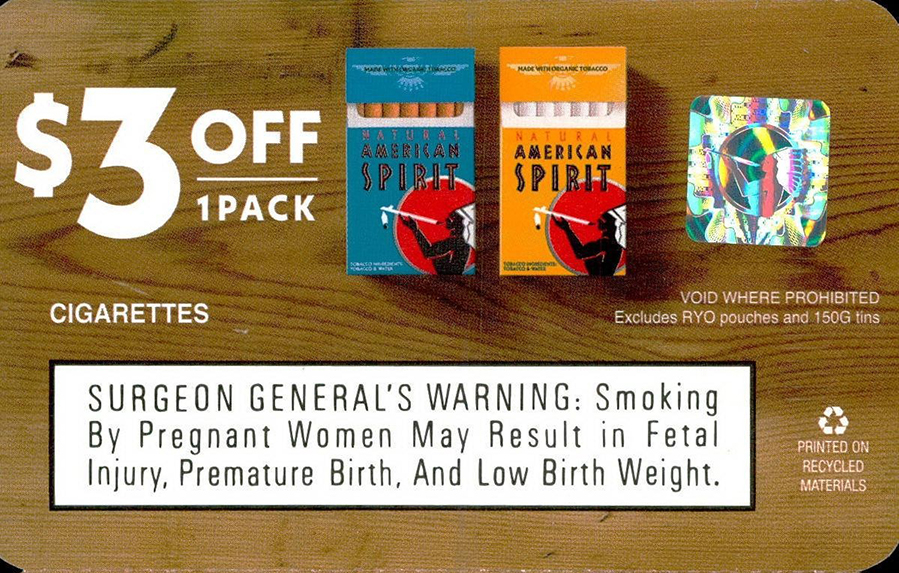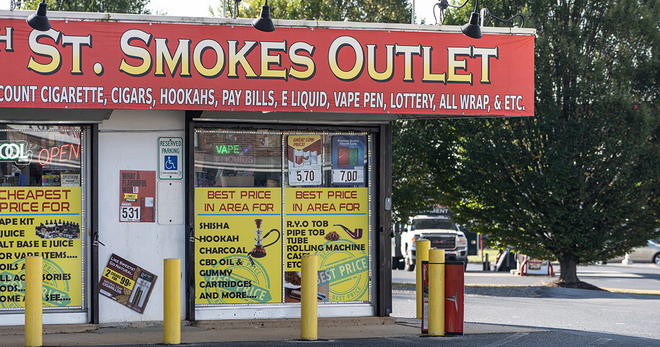Mailed tobacco ads rely on price discounts and youth-appealing themes
Almost all (96%) of a sample of mailed ads for tobacco products included price incentives like coupons and discount codes, which can undercut the impact of excise taxes and other proven effective tobacco control measures that raise the cost of tobacco products, according to Truth Initiative® research recently published in Nicotine & Tobacco Research. Many also used subjects known to appeal to youth and young adults – such as young models and themes of rebellion, socializing, or a night out – which were present in 40% of ads across all products, including in 78% of ads promoting e-cigarettes and heated tobacco products.
The study, which examined ads for cigarettes, smokeless tobacco, little cigars and cigarillos, e-cigarettes and heated tobacco products, highlights how tobacco companies continue to appeal to price-sensitive and vulnerable populations through a marketing channel that is largely hidden from view and not subject to the oversight regulating other types of tobacco advertising.

Promoting tobacco use in vulnerable populations – out of sight
The 1998 Master Settlement Agreement and the 2009 Family Smoking Prevention and Tobacco Control Act limited the tobacco industry’s ability to overtly market its products to youth through venues like billboards or radio ads. There aren’t explicit bans on tobacco marketing through direct mail, which the industry continues to use to reach youth and other vulnerable populations.
Delivered directly to prospective customers’ homes, mailed ads are largely hidden from widespread view. Although past research has examined mailed ads for cigarettes and smokeless tobacco products, the current study also included ads for e-cigarettes and heated tobacco products. Although many social media platforms ban paid tobacco advertising, such restrictions don’t exist for mailed ads.
Researchers analyzed 1,047 tobacco ads for combustible cigarettes, smokeless tobacco, little cigars and cigarillos, and electronic nicotine delivery systems (ENDS) including e-cigarettes and heated tobacco products that circulated between January 2018 and December 2020. Truth Initiative contracted with the Mintel database, which asks its nationally representative panel of members to scan and share copies of all ads that are mailed directly to them.

Price discounts lower barrier to tobacco use
Almost all ads (96%) across tobacco products included price incentives such as coupons or discount codes that reduced prices, and 85% included web promotions or instructions on how to access special offers on websites. “With coupons in nearly every mailer, the most obvious purpose of direct mail advertising is to promote use through reducing cost barriers,” the authors write. Decreasing prices lowers the cost barriers to tobacco use and appeals to price-sensitive consumers.
Coupons and discount codes that reduce the price of tobacco products undercut the effect of tobacco-related tax legislation like excise taxes, which previous research shows is one of the strongest deterrents to initiation and progression of tobacco use, particularly among price-sensitive groups. The findings of the current study point to the need for restrictions on the use of coupons and other discount promotions to protect the proven effectiveness of cost restrictions put in place to deter uptake of tobacco products.

Mailed e-cigarette ads appeal to young people
Themes known to appeal to youth and young adults were present in 40% of ads across all products, including in 78% of ads promoting e-cigarettes and heated tobacco products. These ads featured models who were clearly under 35, referred to a brand’s social media, or included themes known to appeal to young people (e.g., rebellion, individuality, humor) or aesthetic attributes such as high-tech designs.. More than half (51%) of ads for e-cigarettes and heated tobacco products featuring youth-appealing themes also featured young models.
Mailed ads featuring young models and themes that appeal to this group go directly against the tobacco industry’s mandate not to appeal to youth, risking youth initiation of tobacco products.
Direct-mail ads may widen gaps in tobacco use in vulnerable populations
Many mailed ads also featured themes that appeal to other vulnerable populations including rural white and Black audiences.
Researchers found that 40% of ads contained themes with potential appeal to rural white audiences. For example, smokeless tobacco ads frequently feature masculine, blue-collar, and outdoor themes. Nearly half of ads for smokeless tobacco and more than a third of ads for combustible cigarettes employed these themes.
Fifteen percent of ads appeared to target Black audiences, featuring at least one Black model or depicting traditionally Black spaces (barber shops, jazz clubs) or culture like street art, slam poetry, or hip-hop. Big Tobacco has a track record of targeting Black populations using marketing tactics that appropriate African American culture. Black Americans have disproportionately higher tobacco-related death and disease compared to their white counterparts.
“The prevalence of price incentives delivered directly to consumers and out of the public eye threatens to undermine other measures designed to deter tobacco product use and incentivize quitting, particularly among youth and young adults who are price-sensitive,” the authors write.
The research underscores an urgent need for the Food & Drug Administration to establish guidelines regulating tobacco direct-mail advertising as it has done with other marketing mediums.
More in tobacco industry marketing
Want support quitting? Join EX Program
By clicking JOIN, you agree to the Terms, Text Message Terms and Privacy Policy.
Msg&Data rates may apply; msgs are automated.


